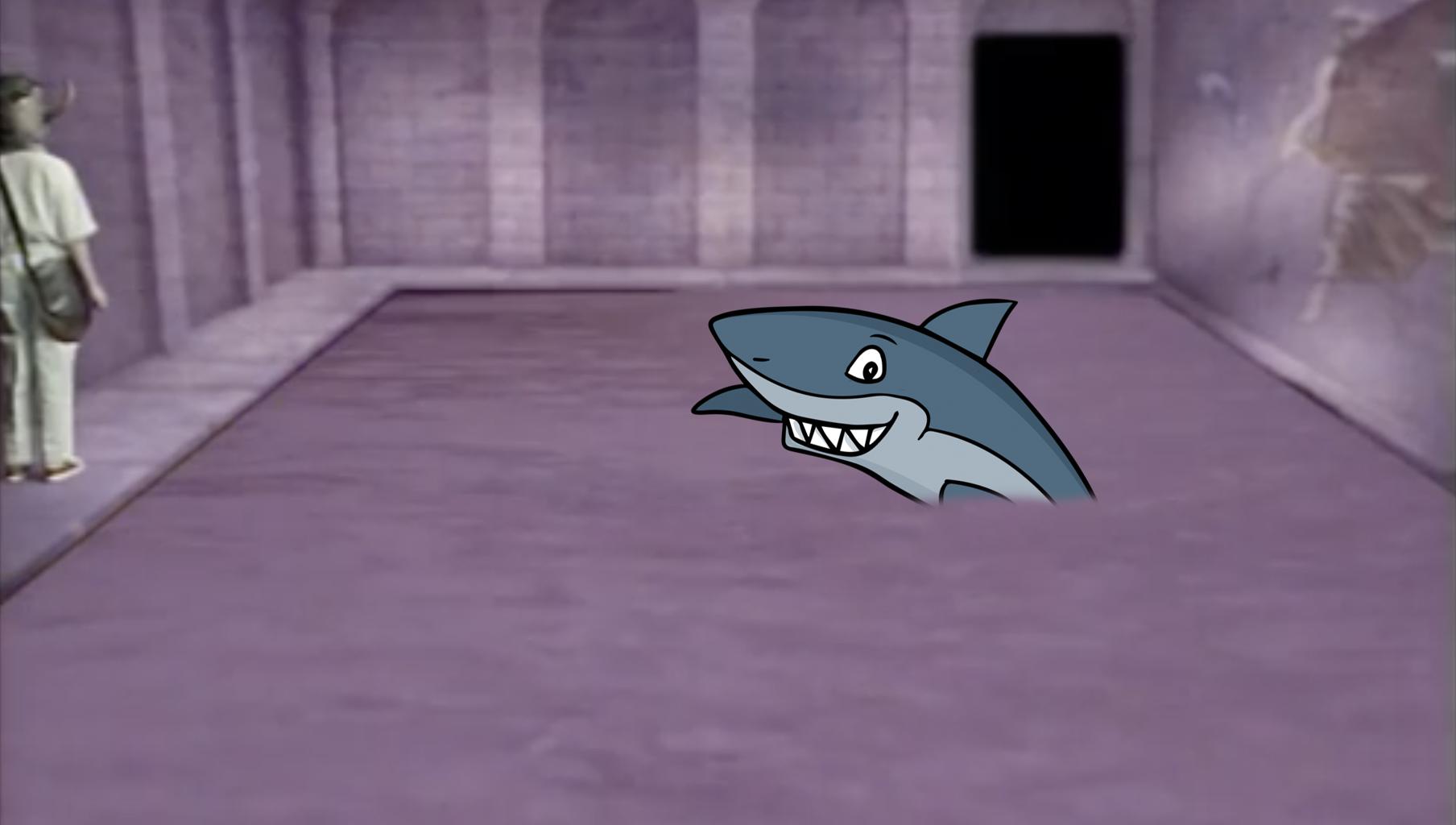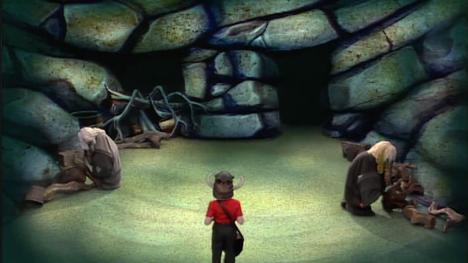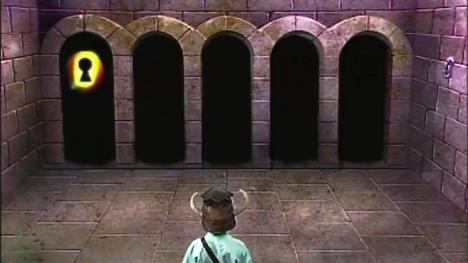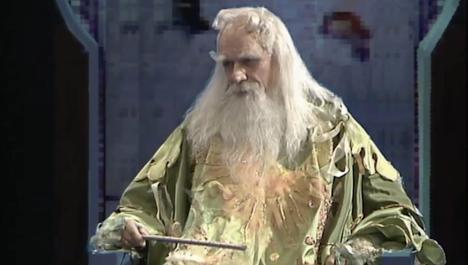If Knightmare jumped the shark in Series 4, did the shark arrive earlier? A watcher's thoughts.
I've decided to write a response to Chris Ballard's recent article on Knightmare jumping the shark. Why? Because:
- One good article deserves another, or at least an attempt at another;
- Back in 2003, I was the first person to mention jumping the shark on Knightmare.com's discussion forum, so I feel I should revisit the theme;
- Anything involving sharks is asking for a sequel. (There will be a shark movie reference somewhere below.)
Chris' view is that Knightmare jumped the shark as soon as the eyeshield blinked into action. Although this device never bothered me, it would be churlish for me to mount a defence of it when Tim Child himself, Knightmare's creator, is on record on this very website as hating it. (The eyeshield, not the website.)
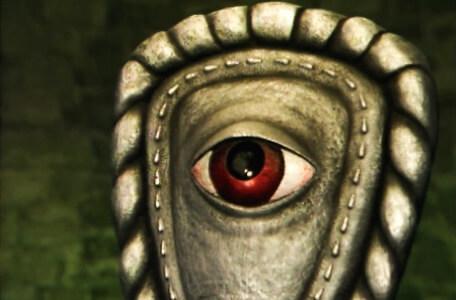
Nor can I overlook Pickle's apparent reaction to the eyeshield in Quest 8 of Series 4: he, or at least actor David Learner, found it laughable. What I would suggest, though, is that the arrival of the eyeshield itself wasn't the beginning of the end because what it represented had its beginnings not in Series 4 but in Series 3.
After typing 'Series 3', I thought I heard a heavenly choir. And justifiably so. Few fans would refute the supremacy of Knightmare's third series and I'm not about to either. It is a candidate for the single best series of sci-fi/fantasy television ever made (and not just because there are no pookas in Breaking Bad). The differences between Knightmare's third and fourth series may seem stark, yet within S3 are the origins of the flaws that Chris has identified in S4.
Of the eyeshield era that began in Series 4, Chris says, 'Quests now passed through forests, villages and a number of different castles. There now tended to be 'locations' rather than 'rooms'' and that 'watching Knightmare I could now see the sky'. Prevalent as this was in S4, if we look back to S3, we find:
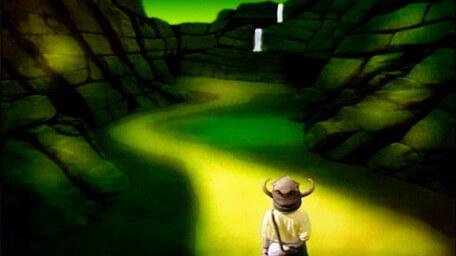
This isn't a room, even though it may function as one. It's a location and a named one at that: the Vale of Vanburn. (Or Banburn? We have only an elf maiden's word to go on and her diction isn't crystal clear.) That may be painted sky but it's still sky. And this was a ground-level location found on Level 1, detracting from any notion that Series 3 quests were a descent down the inside of the mountain on which Knightmare Castle stood.
Nor was that the first time that a dungeoneer had stepped outdoors. Several found themselves outside the mountain during Series 2:
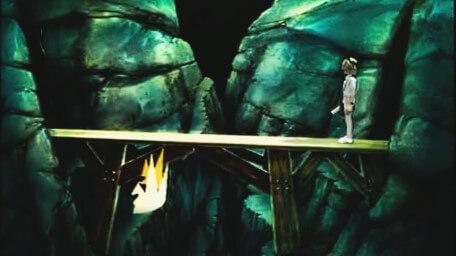
While none of that takes anything away from artist David Rowe's ability to create stunning, unsurpassed visuals which can scarcely be compared with the photography and CGI that came later, it would seem that his brief was not always to design deep, dark dungeon chambers. Knightmare could not have ventured outdoors in the 1990s if it hadn't been pointed (or painted) in that direction in the 1980s.
You might say at this point that those locations aren't really comparable to the ones we started seeing in Series 4, because the advisors were still active in guiding the dungeoneer and choosing where they went. According to Tim Child, the term that applies to eyeshield sequences, where the team had no practical decision-making power, is passive paths. Certainly, a proliferation of passive paths changed the nature of the Greater Game. But once again, I would suggest that this didn't arrive out of the blue (or the pinky-purple) in Series 4, because passive paths began in Series 3 - with the dwarf tunnels.
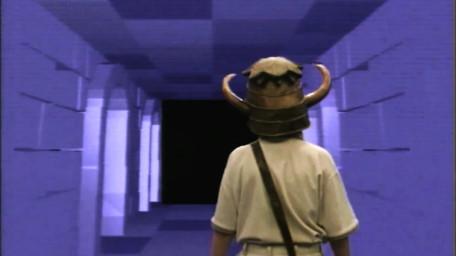
More often than not, when I'm walking down a deserted corridor, listening to my footsteps, I think of Series 3's dwarf tunnels. (Other Knightmare fans get a little help in remembering them.) Like so many aspects of the Dungeon, they made their mark. But by and large, they were passive. And they were frequent. And they were repetitive. At times they have me grabbing the reach wa- er, remote control, pressing fast-forward and humming the Benny Hill theme. (Irreverent perhaps - until you consider the music that accompanied the dwarf tunnels in Knightmare VR.)
By contrast, I can comfortably sit through eyeshield sequences. I find them that much more atmospheric and immersive, and less obviously linear. Depending on where I'm walking, I'm just as likely to imagine myself in an eyeshield sequence as I am in a dwarf tunnel. Having read this far, you'll have realised that I'm not averse to rambling.
"Now look here!" an adjectivally-named Knightmare dwarf might shout at this point. "Our passages were quite active, thank you very much! What about the poisonous bats that the dungeoneers had to keep clear of? What about the goblins and the ogre that stalked their human prey down the tunnels? One dungeoneer used a SPEED spell to get away. No need for your fast-forward button there!" Alright, maybe they weren't such passive paths after all. But in that case, eyeshield journeys in Series 4 were even less passive. One team used a magic brooch to find their way through Dunkley Wood; another team almost got jumped by a woodland haunting and later discarded a clue object to throw pursuing goblins off the trail; various dungeoneers had 'guest voiceovers' as a character shared the journey; the final Series 4 team, like the final Series 3 team, used magic to speed away from danger. (The dungeoneer, Giles, later revealed that he was told to jog for real as the DASH spell took effect.) Dwarves themselves may not have been able to take huge paces, but those tunnels of theirs represented a big step towards the eyeshield.
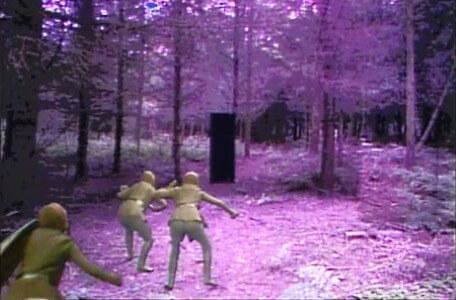
I accept Chris' perspective that 'it was difficult to get excited about Dunswater when you recognised it as the place where Aunty Linda and Uncle Keith got married' (good name for an uncle). But I don't share it. As a child, I found it exciting to wonder whether the castle the dungeoneer was in was one I'd visited myself. (If you've wondered the same thing, this list of filming locations probably has the answer.) Seeing the English Heritage logo spoilt nothing for me: if anything, it made me feel more involved. One man's shark jump is another man's dolphin ride.
And that is the underlying point to this discussion. Jumping the shark will always be subjective, especially when it concerns a programme whose watchers pledged themselves to it at different ages, in different phases. There's no doubt that Series 4 of Knightmare represented a jump. But the shark was already there.
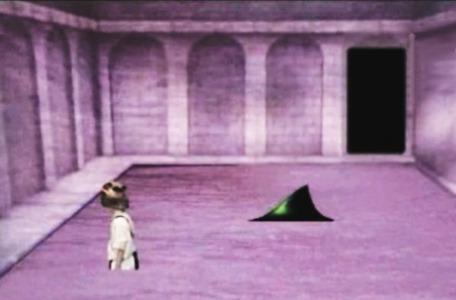
That still leaves me to give my own answer to the question of whether Knightmare jumped the shark, and if so, when. If I had to select a moment at which Knightmare started to lose its way, as Chris has, it would be in the first episode of Series 7 when the spell SIGHT was cast and a blast of technology allowed dungeoneer Simon to see the tunnel he was in.
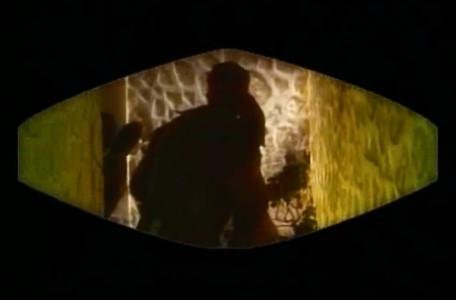
"The Helmet of Justice. It will blind you to the way ahead," the Dungeon Master more-than-once said; and "Your advisors must be your eyes". To render these meaningless was to bend the very concept of Knightmare to breaking point, and the superfluous gimmickry of VISOR spells, True Seeing potions and Insight powders was not what I looked for in Knightmare. I have a vague memory of one S7 quest - it was probably Barry's... and there's that heavenly choir again - when the dungeoneer cast a LOOK spell while on Smirkenorff's back and was able to see, in the water far below, a shark. At which point the dragon turned his head toward the dungeoneer, sneered at the new Helmet design and remarked:
Read more about this topic on our forum or submit your own piece for Knightmare.com.
